Our Summer with Ingmar, at 100
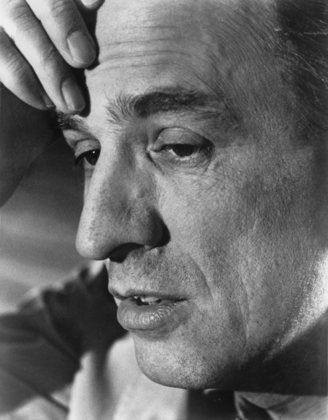
Confession: I had intended to write a long piece this July observing the 100th anniversary of the birth of Swedish film director Ingmar Bergman entitled Summer with Ingmar. Taken from the American distribution title of his 1952 film Summer with Monika (original title: Monika), which was the first of the director’s films to reach a wider international audience (albeit, on these shores, as a salaciously shortened and re-cut exploitation movie), the warmth and openness of Bergman’s early romantic drama epitomizes an overlooked quality to a body of work more starkly known for its coldness and emotional claustrophobia.
However, considering the glut of praise, criticism, and opinion flooding the internet upon this anniversary, a decision to remain a still, silent voice – possibly not unlike the spider-god that emerges from behind the summer cabin wall to terrify a mad woman (played by Monika star Harriet Andersson) in Bergman’s later Through a Glass Darkly (1961) – seemed prudent. Even if, one supposes, the opposing summer-like flickerings among his otherwise harrowing filmography may remain sadly under-recognized.
The Medieval figure of Death walking a plague-rotten beach, in 1957’s The Seventh Seal, or the knife-like verbal recriminations climaxing his six-part TV film Scenes from a Marriage in 1973, justly created a popular audience for challenging artistic fare.
Born Ernst Ingmar Bergman in the early hours of Vargtimmen (The Hour of the Wolf, also the title of his 1968 film) on the Sabbath – on July 14, 1918 – the middle child of a renowned Lutheran pastor and his forthright wife, a trained nurse and railway heiress, had a comfortable bourgeois upbringing which belied dark undercurrents of tension, conflict, and scandal. All provided dramatic fuel for a future director of theater, film, and television, even as the warm glow of childhood nostalgia illuminated moments of tenderness, compassion, and even humor.
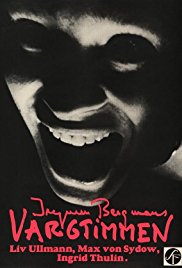
Hour of the Wolf (1968)
The Medieval figure of Death walking a plague-rotten beach, in 1957’s The Seventh Seal, or the knife-like verbal recriminations climaxing his six-part TV film Scenes from a Marriage in 1973, justly created a popular audience for challenging artistic fare; although one could easily cite an evening’s breath of seasonal air blowing warmly through a creaking windmill, in 1955’s Smiles of a Summer Night, or a painfully-deceased woman expressing gratitude for her past life, in 1972’s Cries and Whispers, as counter-balancing a vision that was equal parts darkness and light.
Having watched thirty films in preparation for a film list that will remain, again, sadly unrealized, my Summer with Ingmar, in the director’s centennial year, has nonetheless inspired appreciation of and indeed identification with the whirring and clicking imagery sprung fully formed from the director’s earliest years. One Christmas, young Ingmar traded his elder brother Dag a collection of tin soldiers for a kerosene-fueled Magic Lantern, the pre-film device not only later provided the title to his 1986 autobiography but also directly inspired a lifelong fascination with the emotional and dramatic possibilities of motion images; the early memory of both wonder and terror unquestioningly enriching Ingmar Bergman’s century of filmmaking. The long-ago summer Sunday at war’s end, during one of world history’s greatest disease pandemics, came to reflect a complicated, maddening; joyful, triumphant; distressing, devastating; life-affirming, hopeful; despairing, doubtful – and all the light and dark in between – of 100 years and 45 films. We are living and viewing them still.
– Justin Mory
The Seventh Seal
1957, Svensk Filmindustri, dir. Ingmar Bergman
by Max Foizey
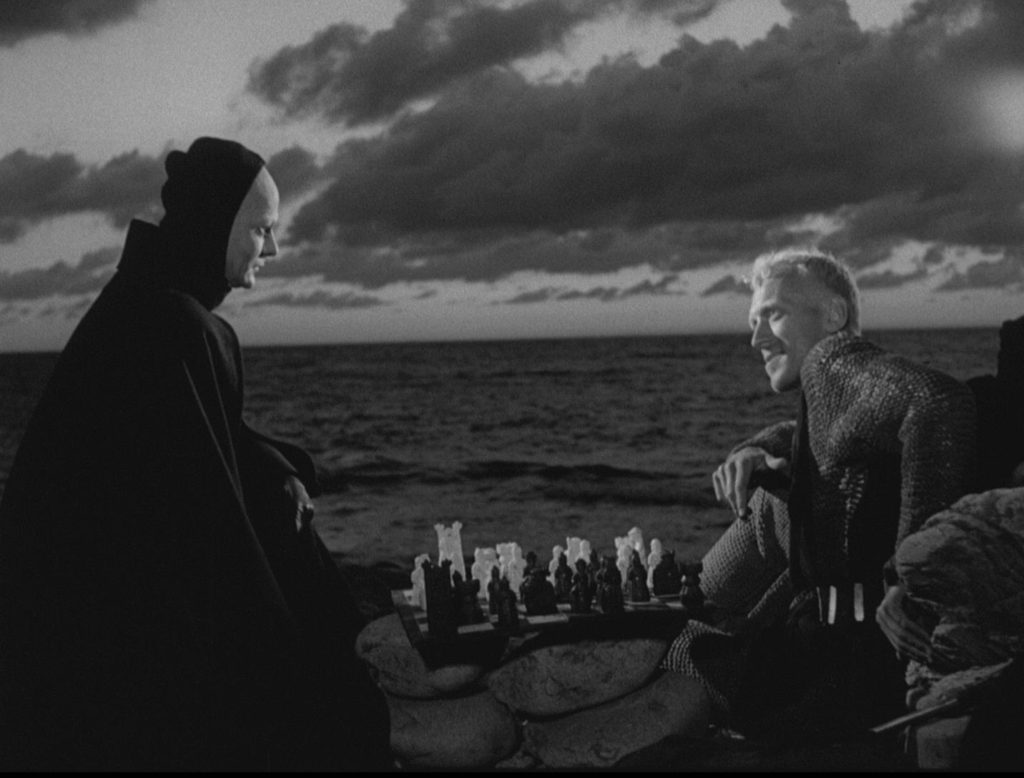
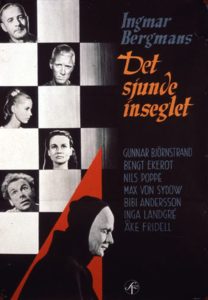 A single black crow flies against a cloudy sky in the opening shot of Ingmar Bergman’s masterpiece The Seventh Seal, setting the mood instantly for a film that offers striking, often disturbing imagery throughout. Antonius Block (Max von Sydow) is a knight traveling with his squire Jöns (Gunnar Björnstrand) back to Denmark after spending the last decade fighting in the Crusades. They find their homeland ravaged by the plague, and soon Death (Bengt Ekerot) comes for Antonius. Not ready to die, Antonius challenges Death to a game of chess, with the stakes being his life. Death agrees, confident this will only delay the inevitable.
A single black crow flies against a cloudy sky in the opening shot of Ingmar Bergman’s masterpiece The Seventh Seal, setting the mood instantly for a film that offers striking, often disturbing imagery throughout. Antonius Block (Max von Sydow) is a knight traveling with his squire Jöns (Gunnar Björnstrand) back to Denmark after spending the last decade fighting in the Crusades. They find their homeland ravaged by the plague, and soon Death (Bengt Ekerot) comes for Antonius. Not ready to die, Antonius challenges Death to a game of chess, with the stakes being his life. Death agrees, confident this will only delay the inevitable.
And so the knight, along with his squire, is able to continue his journey back to his castle to reunite with his wife. Along the way, in between rounds of chess with Death, Antonius and Jöns meet Jof (Nils Poppe), his wife Mia (Bibi Andersson), and their baby Mikael. Jof and Mia are actors, traveling with their manager Jonas (Erik Strandmark). Antonius, a man who clings to his faith even in the face of death, is struck by this family’s love for one another, while Jöns, being a full-on nihilist, hardly notices.
A nakedly symbolic film, the characters in The Seventh Seal are vividly drawn, each representing an idea or point of view as commentary on the existential thoughts Antonius is struggling with. There are times when The Seventh Seal comes across like a conversation about the meaning of life that many of us had years ago in college dorms at three o’clock in the morning, but the film isn’t as pretentious as you may fear. Bergman’s film is an even more impressive feat when you take into consideration that it was released in 1957, when one of the most popular American television programs was The Danny Thomas Show, and Peyton Place topped the box office. Nobody was making art like this at that time.
The cinematic impact of The Seventh Seal cannot be overstated. Seeing Max von Sydow’s short blond hair I thought of Rutger Hauer’s Roy Batty from Ridley Scott’s Blade Runner, a character who was also played chess and was obsessed with the meaning of his existence. I thought of Robert Blake’s Mystery Man in David Lynch’s Lost Highway, with his white visage and black dress recalling a vision of Death. And of course who could forget the greatest pop culture tribute to Bergman’s film, William Sadler as Death in Bill and Ted’s Bogus Journey, a spectre who challenges our heroes for their lives through games of Clue, Battleship, and Twister.
Bergman’s film makes the argument that we are alone in this world, that God is silent because he doesn’t exist, yet we would do well not to dwell on this cruel fact, but do our best to savor the small, quiet, peaceful moments in life that are filled with kindness and love. As Antonius says to the young family he meets on his journey: “I will remember this hour of peace. The dusk, the bowl of wild strawberries, the bowl of milk.”
Smiles of a Summer Night
1955, Svensk Filmindustri, dir. Ingmar Bergman
by Madeline Brophy
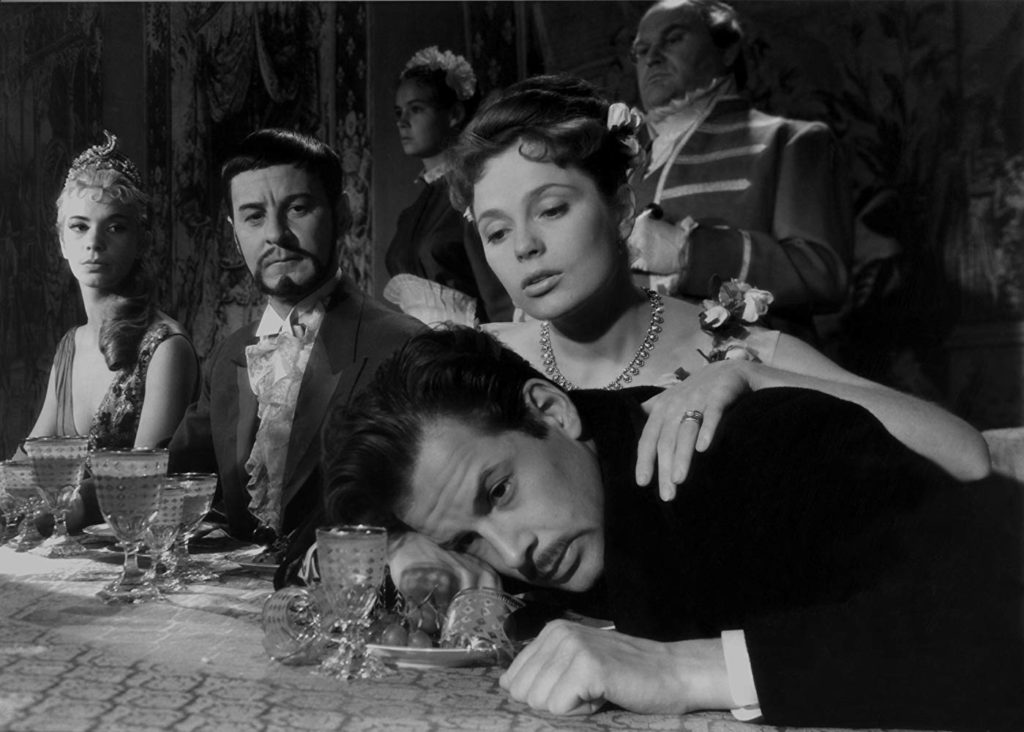
 There are only a few young lovers in the world… Love has befallen them as a gift and a punishment.
There are only a few young lovers in the world… Love has befallen them as a gift and a punishment.
Ingmar Bergman has crafted a wide variety of films over the decades, some happier and arguably more enjoyable than others. As a critic, I’m a little embarrassed to share that this was my first Bergman movie, a movie that, in its time, was a surprise hit. Over the years, Smiles of a Summer Night has earned critical acclaim including its 2005 appearance in TIME magazine, ranking it one of the 100 greatest films since 1923. When it won for Best Poetic Humour at the 1956 Cannes Film Festival, Bergman said he did not know the film had even been submitted! It’s safe to say this film established Bergman as one of the most unique and talented filmmakers of his generation.
In a classic story of love and betrayal, we meet Mr. Fredrik Egerman, a middle-aged lawyer at his own self-titled firm. Immediately, audiences know he is a topic of discussion and judgement as his coworkers gossip about his previous marriages and affairs. Throughout the movie, Fredrik is met with multiple women who are after his heart, while he himself remains captivated by an actress of the theater named Desiree. His wife Anne, barely 20 years old, naively vies for his attention, unsure of her own yearnings. Fredrik’s son from his first marriage, Henrik, also barely 20, longs for Anne, while their maid named Petra searches for attention from anyone. Ultimately, when all attend a weekend resort, desires are tested. What a mess. What a movie!
On the surface this film is a comedy. However, it’s clear Bergman strives for something deeper, illuminating the dysfunction of love and selfishness through the films’ characters; speaking to how our own desires complicate and conflict with our partners. Some of the poetry, plays, and songs throughout the film speak to this directly, leaving the audience to ponder a longer film evaluation after its final scenes. What a brilliant, complicated mess of a romantic comedy.
After watching Smiles, I am fascinated in Bergman’s ability to tell stories, exposing each characters sorrow, heartache, and fears; exploring these universal human truths. All characters struggle with aging, all worry about making mistakes in love, all are ultimately fearful of being humiliated. Sex is openly discussed. The men talk about their feelings and emotions, and are just as vulnerable as the women (super refreshing)- and this movie was made in the 50’s! There are many moments that leave the audience ultimately engaged in each characters trajectory of love and learning; I argue this is one of the many reasons the film works so well.
The acting is good, and though there are many characters on screen, Bergman manages to balance them all in the storyline, while the movie remains pretty easy to follow. My only criticisms are some of the editing choices, mainly in the transitions; one moment a character is in one spot only to be on the other side of the room insanely fast? Some of these editing choices were a little disrupting but easy to look past.
While this is only one of Bergman’s many film hits, I recommend the watch, especially for this summer season, but mostly for the film’s eccentric storylines and witty dialogue that’s deeper than it appears at first watch. To those who like romantic comedies, I challenge you to give this a watch for a seemingly different experience. For those who don’t, like myself, this is a movie for you. I look forward to my next Bergman film, though I’m weary it’ll be anything as lighthearted as Smiles of a Summer Night.
Persona
1966, Svensk Filmindustri, dir. Ingmar Bergman
by Jeffrey Knight
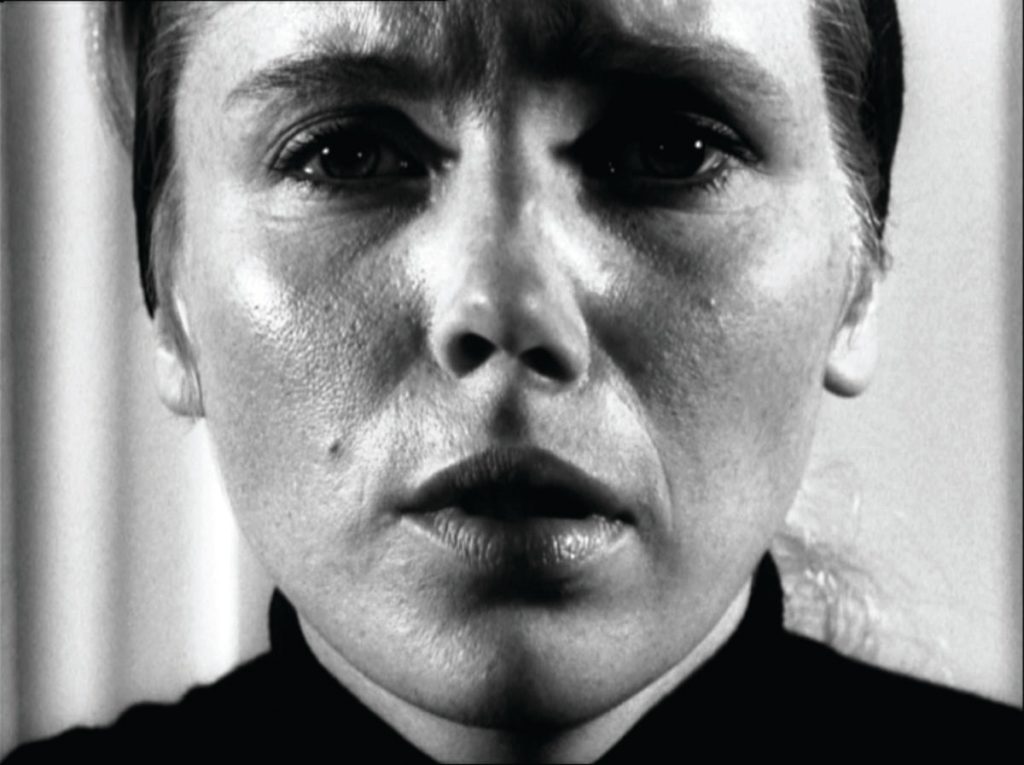
 What can I say about Persona that hasn’t been said a thousand times before, and by people who are much smarter and better writers? And how could anyone encapsulate this movie in so short an essay?
What can I say about Persona that hasn’t been said a thousand times before, and by people who are much smarter and better writers? And how could anyone encapsulate this movie in so short an essay?
Persona is the work of a master ‘formalist.’ The term, taken from author Scott McCloud’s Making Comics refers to an artist who seeks to fully understand and experiment with the language of their art. McCloud writes that formalists have an “eagerness to turn comics inside-out and upside-down in an effort to understand the form’s potential more fully.” They “let craft and story take a back seat if necessary, in pursuit of new ideas that could change comics for the better.” He was talking about comic artists like Art Spiegelman and Kevin Huizenga. But his words couldn’t describe what Bergman is doing in Persona any better.
Taken literally, Persona is a story about a psychic vampire. An actress, Elisabet Vogler (Liv Ullmann) freezes onstage during a performance of Elektra. She retreats inside herself and refuses to speak. Alma (Bibi Andersson) is the young nurse assigned as Elisabet’s caretaker. The two women move to a secluded seaside cabin for Elisabet’s convalescence. During the weeks that follow, their relationship slowly begins to shift, and Alma begins to fear that she is losing herself to Elisabet’s more powerful will. The personalities of the two women merge into one.
But it’s clear from the outset that a literal reading of the film is not what Bergman intends. The opening shots of the movie are that of a projector light igniting, and reels of film unspooling. Seemingly random snippets- a silent film about a ghost, documentary footage of animal slaughter, a random shot of an erect penis- flash by without comment. In the middle of the film, when Alma and Elisabet’s relationship breaks down so does the film. There is a literal film burn at a moment of crisis. Towards the end, there is an insert shot of the director and his cinematographer filming the scene on a soundstage. Bergman is pulling back the curtain and showing us: “See, it is only a movie!”
And all of this makes it difficult to connect with Persona on an emotional level. There are times in the film where Bergman’s deliberate artifice is set aside and he lets his actors perform. Alma’s telling of the story of her time on the beach with those boys is one of the most intensely erotic scenes I’ve seen in a movie in a good long while, despite there being nothing visually graphic about it.
Don’t misunderstand me, this is a good movie, and there are many, many things in which to admire it (the shot where Elisabet materializes out of the fog into Alma’s bedroom at night… *swoon*). But I don’t think I could ever love Persona. Not in the way I love films by many other directors. I’ve always approached each Bergman film with a sense of obligation. They are rewarding films that give you a lot to think about, and stay with you long after you’re done watching them, and Persona is no exception. I suspect I will watch it again, and soon.
Shame
1968, Svensk Filmindustri, dir. Ingmar Bergman
by Robert Hornak
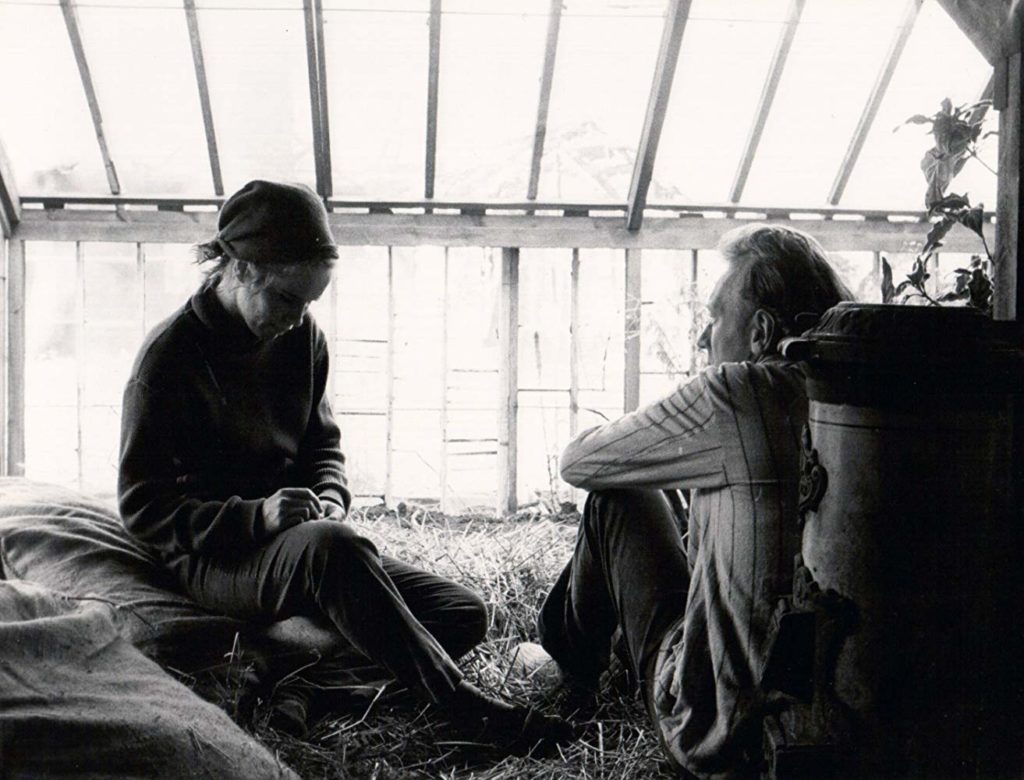
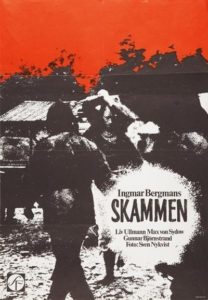 It’s been awhile since I’ve seen an Ingmar Bergman movie, and never since I’ve seen this one. I’d forgotten how simple his symbols could sometimes be – he can take the barest of elements and infuse them to the hilt with his 3am fever-dream existential flop-sweat until they’re battered into something worthy of the bleak Scandinavian tundra that surrounds them. It may be perverse to say, but in this way he’s like some far-estranged, brainy brother of Sam Fuller, a director from the other end of the intellectual spectrum who nevertheless builds fully living manifestations of the squalid human id out of the most cardboard of genre types. Here, in Shame, Bergman hoists high the easy math of marriage-equals-war, showing off his unerring way with the absurdity of the self-reflective animal, only to lead us down the usual Bergmany path, watching the human gambit of marital adventure wither into a (another) treatise on the banality of finality.
It’s been awhile since I’ve seen an Ingmar Bergman movie, and never since I’ve seen this one. I’d forgotten how simple his symbols could sometimes be – he can take the barest of elements and infuse them to the hilt with his 3am fever-dream existential flop-sweat until they’re battered into something worthy of the bleak Scandinavian tundra that surrounds them. It may be perverse to say, but in this way he’s like some far-estranged, brainy brother of Sam Fuller, a director from the other end of the intellectual spectrum who nevertheless builds fully living manifestations of the squalid human id out of the most cardboard of genre types. Here, in Shame, Bergman hoists high the easy math of marriage-equals-war, showing off his unerring way with the absurdity of the self-reflective animal, only to lead us down the usual Bergmany path, watching the human gambit of marital adventure wither into a (another) treatise on the banality of finality.
We watch bickering, island-dwelling husband and wife Jan (Max von Sydow) and Eva (Liv Ullmann) remain as peripheral to the looming civil war at their doorstep as possible, busying themselves with their vegetable garden and talk of phone bills and dreams, their clear schism coinciding with word of periodic military movements in the distance that eventually become sorties overhead, explosions in their back woods, and a caved-in, flame-engulfed roof.
Throughout, parallels to the perils of marriage are sprinkled about the main war theme to leaven the grim festivities with at least variety: they are musicians who’ve not made music in a long time; home items remain in ongoing disrepair (sink, radio, car); he’s got a wisdom tooth coming in, the most recent of which had to be dug out painfully piece-by-piece; etc. After a visit to a pathetic bachelor friend prompts a somewhat perfunctory renewal of their love, the war comes hard like the ridiculing finger of God and they have to flee through an ever-exploding, body-strewn landscape. By the end, after Jan has killed a man and with the couple drifting in a boat full of refugees through a waterway stuck with corpses, it’s not enough to call the film an allegory on the perils of monogamy – it’s become something of a matter-of-fact Guernica that treats war as just the most extreme example of arbitrary life.
Winter Light
1963, Svensk Filmindustri, dir. Ingmar Bergman
by Jim Tudor
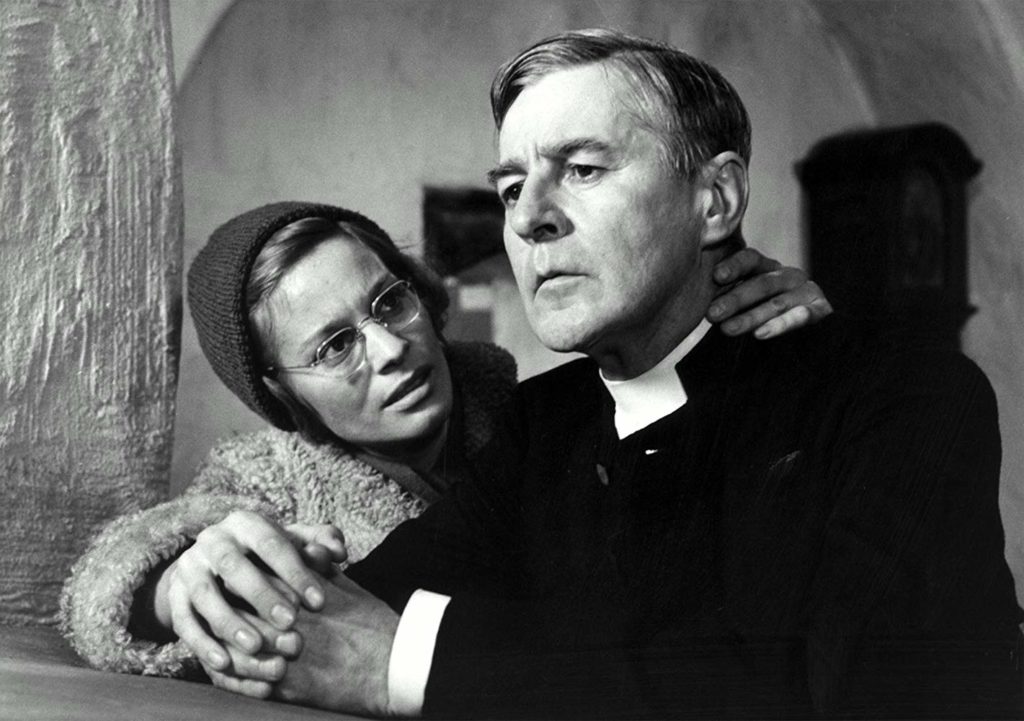
 As another suicide-filled Scandinavian winter day gives way into night, we are left to ponder at least one question… That question just might be, “In Ingmar Bergman’s Winter Light, is the closing scene of faithless Lutheran pastor Tomas Ericsson (Gunnar Björnstrand) going ahead with a full-on church service despite only one lowly parishioner in attendance an indication of optimism, or of a staunch soul-dead spirit?” Small glory or rote hallelujahs?
As another suicide-filled Scandinavian winter day gives way into night, we are left to ponder at least one question… That question just might be, “In Ingmar Bergman’s Winter Light, is the closing scene of faithless Lutheran pastor Tomas Ericsson (Gunnar Björnstrand) going ahead with a full-on church service despite only one lowly parishioner in attendance an indication of optimism, or of a staunch soul-dead spirit?” Small glory or rote hallelujahs?
According to Bergman scholar Peter Cowie, it is the former. According to my wife, a self-described non-fan of the venerated filmmaker, it’s the latter. At least at the moment, I wonder if it could be both.
In my admittedly uniquely limited circles of other film critics and Presbyterian churchgoers, Winter Light might just be the Bergman film that comes up the most often. Certainly in the latter circle, where a fellow congregant, poet Bruce Smith, went as far as to name his published poetry collection after the film, the sustained (if latent) interest is quite likely rooted in what the film is about, as opposed to how it is about it. As is the case with Bergman, both are vital to the entirety of the experience.
Even at a meager eighty-one minutes and dialed back in terms of tone and scale, Winter Light makes an impact. Filmed in striking black and white by the great Sven Nykvist, the provincial setting of the film stands out in the early Bergman canon as particularly “real world”, following the lead of fellow entry in the filmmaker’s “Faith Trilogy”, Through a Glass Darkly. 1963’s The Silence, a hotel-based meditative mental breakdown that no doubt directly influenced Kubrick’s The Shining, would wrap out the trilogy. Together, the three films serve as Bergman’s most focused and sustained grappling with God, prayer, and practiced Christianity. Of the three, Winter Light is the most direct, it being the centralized portrait of loss of faith in all of Bergman. In a narrative window of just one afternoon, Tomas must confront his own encroached doubt about God as his longtime mistress, the unbelieving Märta, (an outstanding Ingrid Thulin) crushingly confides and condemns him. Along the way, a pregnant parishioner (Gunnel Lindblom) brings her unraveling husband (Max von Sydow) to him for council. It does not go well.
I suppose it shouldn’t be a big surprise that it’s clear that filmmaker Paul Schrader liberally grafted much of Winter Light onto his current indie hit, First Reformed. The latter narratively quotes the former to such a large degree in its first half that those in the know could understandably flag Schrader’s film as a near-remake. And, it almost is- until it’s second half drops Winter Light in favor of quoting Andrei Tarkovsky’s The Sacrifice. Nevertheless, Schrader’s film is to be celebrated, as he’d likely be the first to admit the homages. Tarkovsky and Bergman may both be dead, but their light undeniably lives on.
What’s striking about Winter Light, though, is how it is so effectively both dialed back yet blunt. Bergman is walking the most subtle of tightropes here, arriving to the other side not with answers (of course not), but another excellent piece of cinema.
Face To Face
1976, Cinematograph AB, dir. Ingmar Bergman
by Justin Mory
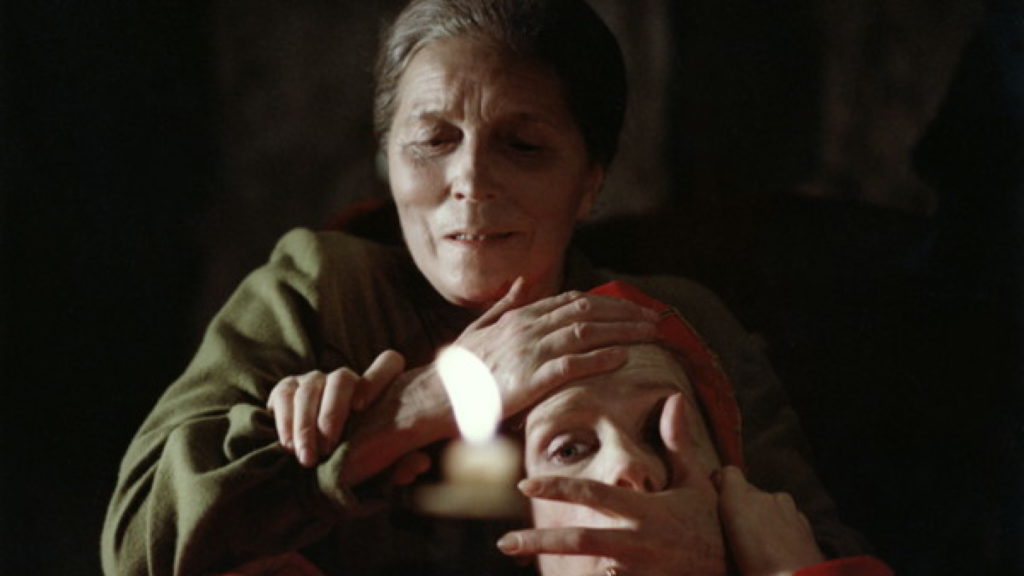
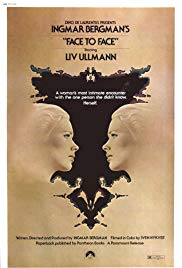 The one film among the 2 ½ dozen from my Summer with Ingmar I watched for the first time is also the one Ingmar Bergman film that neurotic standup comedian and Bergman fanatic Alvy Singer famously missed during Woody Allen’s 1977 Annie Hall. Arriving a minute late to a Manhattan art theater with the title character, played by Diane Keaton, the tightly-wound comic-depressive refuses to miss the Swedish opening credits of the film master’s theatrical showing of Face to Face. In Woody Allen’s next comedy, 1979’s Manhattan, Allen’s character Isaac (and from Victor Sjöström’s Isak Borg in 1957’s Wild Strawberries to Face to Face’s protagonist’s surname Isakson, there are many “Isaac”s in Bergman’s cinema) calls his director hero “the only genius in cinema today” – to which Diane Keaton’s pretentious character Mary dismisses as “bleak”, “adolescent”, and “pessim[istic]” among her maddening “Academy of the Overrated” – so the fact my Admission at least fictionally aligns with possibly the most devoted admirer of Ingmar Bergman’s cinema makes me feel better about never having seen it.
The one film among the 2 ½ dozen from my Summer with Ingmar I watched for the first time is also the one Ingmar Bergman film that neurotic standup comedian and Bergman fanatic Alvy Singer famously missed during Woody Allen’s 1977 Annie Hall. Arriving a minute late to a Manhattan art theater with the title character, played by Diane Keaton, the tightly-wound comic-depressive refuses to miss the Swedish opening credits of the film master’s theatrical showing of Face to Face. In Woody Allen’s next comedy, 1979’s Manhattan, Allen’s character Isaac (and from Victor Sjöström’s Isak Borg in 1957’s Wild Strawberries to Face to Face’s protagonist’s surname Isakson, there are many “Isaac”s in Bergman’s cinema) calls his director hero “the only genius in cinema today” – to which Diane Keaton’s pretentious character Mary dismisses as “bleak”, “adolescent”, and “pessim[istic]” among her maddening “Academy of the Overrated” – so the fact my Admission at least fictionally aligns with possibly the most devoted admirer of Ingmar Bergman’s cinema makes me feel better about never having seen it.
Until now, that is. Long unavailable on home video, and never seen on these shores in its four-part, 177-minute cut, for Swedish television, the 134-minute US theatrical version begins with English titles; so perhaps Alvy Singer’s objection to missing them was justified after all. The first image shows Liv Ullman’s Dr. Jenny Isakson, a psychiatrist specializing in the narrow boundaries between sanity and madness, full title-facing the camera to regard us, her voyeurs for the next few hours. Detailing her own mental breakdown through trauma, neuroses, hallucinations, dreams, visions – both real and imagined – this later career effort from a filmmaker who had frequently portrayed all of these is typically shattering and emotionally wrenching. (One scene, which I will here only allude to, has complicated impact even beyond its initial conception and circa 1976 viewing.)
Other familiar Bergman “faces” include the powerful Gunnar Björnstrand, shorn of that power as Jenny’s stroke-stricken grandfather, Kari Sylwan offering a strong point of departure in the shockingly sexual opening scene from her selfless maid of Cries and Whispers (1972), and a returning Erland Josephson, as a physician who takes a personal interest in his medical colleague’s strange mental symptoms, exploring levels of calm intimacy ignored previously in his and Liv Ullmann’s emotionally explosive interplay in Scenes from a Marriage (1973). That the drama’s most unforgettable “presence” comes from a one-eyed, silent phantom credited only as The Woman (Tore Segelcke), who accosts the protagonist around familiar corners and across comfortable rooms in her grandparents’ otherwise lovely home, shows even Bergman isn’t above the occasional jump-scare.
But throughout and resonant long after Dr. Jenny Isakson turns away from the camera’s eye at film’s end is the mesmeric physical presence of Liv Ullmann, possibly the greatest among Bergman’s famed pantheon of steel-spined and emotionally strong actresses. My first-time viewing may have overlooked the smaller details of plot and characters, but I will not soon forget the most complicated, conflicted, and compelling gaze in Bergman’s century of filmmaking. I can only hope Alvy and Annie got a chance to see it, too.

